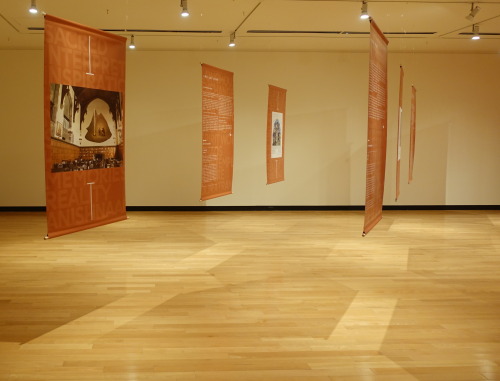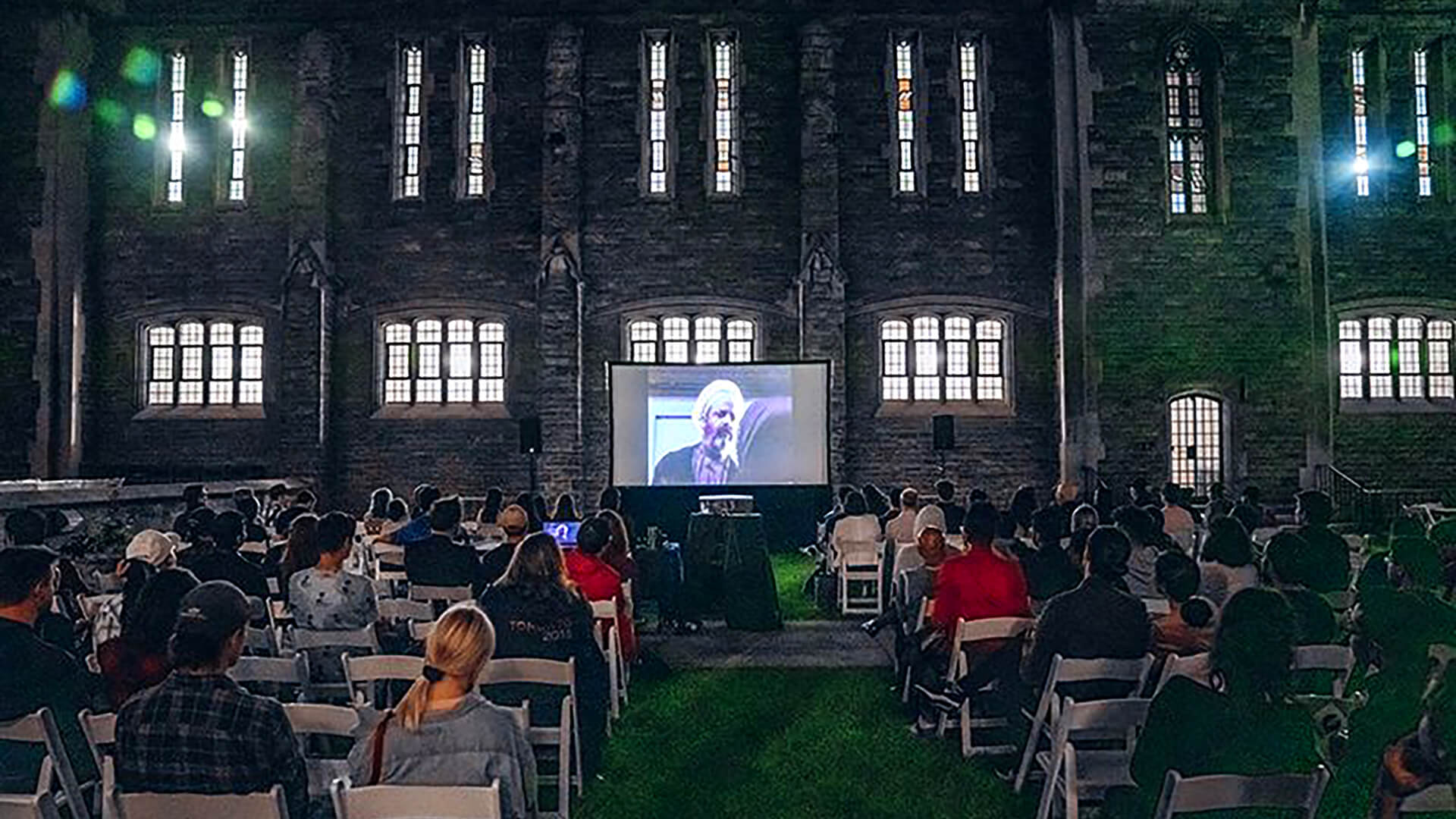
For its centennial celebrations in 2019, Hart House is commissioning a new artwork for its Great Hall that will create new ways of honouring those who came before us and the history and land upon which we live and work. It will also help shape new ideas and ideals for current and future generations.
In part as a response to the objectives of the Calls to Action outlined by the Truth and Reconciliation Commission of Canada (TRCC) and the final report of the University of Toronto’s response to the TRCC, the art commission’s goals are to position, acknowledge, and strengthen Indigenous presence and perspectives not just within Hart House itself, but also within U of T and the city of Toronto.
Given Hart House’s century-long mandate to be a presenter of contemporary visual art, the commissioning of a major, original work by an Indigenous artist for the north wall in the Great Hall is an important step towards transforming that space.
We sat down with Hart House Warden, John Monahan, to discuss Re-Imagining Place: The Hart House Centennial Commission.
As part of Hart House’s upcoming 100th anniversary celebrations, you will be commissioning an Indigenous artist to create a major artwork to be installed in the Great Hall. Why?
This commissioning is really about transforming and disrupting the Great Hall in the most positive way possible. We hope it will help to signal Hart House’s sincere commitment to be an evermore inclusive place where all students, staff and faculty are able to see themselves, their narratives and their experiences welcomed and reflected back to them in the physical space.
When better than at the century mark of Hart House to stop and take stock of where we have been, where we are, and where we are going as a centre for students and the broader community at UofT? And when we take that kind of hard, honest look at the House, it doesn’t take long to notice that - even at the end of an otherwise remarkable century of student engagement and collective achievement, and despite some important recent steps that have been taken to diversify the histories and narratives represented at Hart House through our approach to the visual arts and other programming - the overall physical environment of the House remains essentially Eurocentric and colonial. And given that Hart House belongs to all students, of all different backgrounds and cultures and life experiences, we have a tremendous obligation and opportunity to begin our second century with a demonstrably firm commitment to ensuring that all students see themselves, their communities and their narratives reflected back at them, in ways both small and large.
This commission is just one of the larger ways we intend to do that. It seems to me that, if we want to take a step towards achieving a more inclusive and representative balance of voices and experiences in Hart House, an essential first step must be to acknowledge that the land on which Hart House stands has been inhabited by Indigenous people for some 15,000 years, and that Indigenous people from across Turtle Island continue to call this meeting place of Toronto, home. And because the Great Hall is not just the centre of Hart House, but also a key gathering place for people from all across Toronto, I am hopeful that the significance of this artwork will be felt and appreciated far beyond the boundaries of the University of Toronto.
“Artwork can be one of the most potent ways to reach people in their soul… to encourage them to think about the way the world could be, not just the way it is.”
How is Hart House seeking guidance and input from Indigenous voices?
Indigenous voices have been essential contributors to the art commissioning process from early on, and we are deeply grateful for the time, the expertise and the wisdom that they have imparted to us.
At the start, we consulted with Elders and knowledge keepers and other members of the Indigenous community, both at U of T and outside the university. They helped us to clarify the terms of reference of the commission, they suggested or commented on names of artists, curators and arts administrators to serve on our all-Indigenous jury, and they contributed to the development of a long list of artists for that jury to consider inviting to submit proposals for the commission. And after the jury narrowed the long list down to a smaller group of artists, those artists were invited to submit proposals for consideration, which they did over the course of the summer. Then, our amazing colleagues in the Art Museum – Barbara Fischer and Sarah Robayo-Sheridan in particular – turned those proposals into a remarkable exhibit where we have hosted a series of visits and discussions with Indigenous students and colleagues that have enabled us to gather their feedback and offer it back to the jury to help inform their final recommendation to the University.
We also struck a committee known as the University Review Committee, chaired by the Vice Provost of Students, Professor Sandy Welsh, to consult with key interested estates of the University about the shortlisted proposals. A sizeable proportion of that Committee was comprised of Indigenous Elders, faculty, staff and students. So each step of the selection process to determine which piece of art is ultimately installed in the Great Hall has been enriched and guided by Indigenous voices and perspectives. Which is only appropriate, because these same voices were effectively silenced at Hart House for 100 years.
How does this commission support Hart House’s strategic goals?
Hart House aspires to be a place that is welcoming and engaging of all students and all members of the university community across all different cultural, ethnic, religious, geographic identities and backgrounds. To my mind it would be inauthentic for Hart House to brag about being welcoming and inclusive if we did not start by acknowledging and addressing the almost total absence of Indigenous voice in the House. But talk is cheap and not always the most effective way to communicate ideas. Visual art, by contrast, can be one of the most potent ways to reach people deep in their souls, to encourage them to examine their own relationship to the work, and hopefully to think about the way the world could be and not just the way it is.
Why now?
Because the artwork that will be commissioned has already been missing from the House for a century. The essential recognition of the land and the people that have lived on and cared for this land for millennia is long overdue at Hart House. This commissioning process represents an opportunity for us to embark on our second century in a good way.
In October this year, a jury will choose a finalist from the proposals presented in this exhibition. Overseen and implemented by the Art Museum at the University of Toronto, of which Hart House is a founding member, the completed work will be unveiled on November 12, 2019 during a gala celebration to mark Hart House’s 100th Anniversary.
The shortlisted proposals are by: Rebecca Belmore and Osvaldo Yero (RBOY inc.), Hannah Claus, Faye Heavyshield, Ursula Johnson in collaboration with Maria Hupfield, Amy Malbeuf, Nadia Myre, Tannis Nielsen, Shelley Niro, Travis Shilling. Visit the Justina M. Barnicke Gallery to learn more and view the exhibit.



